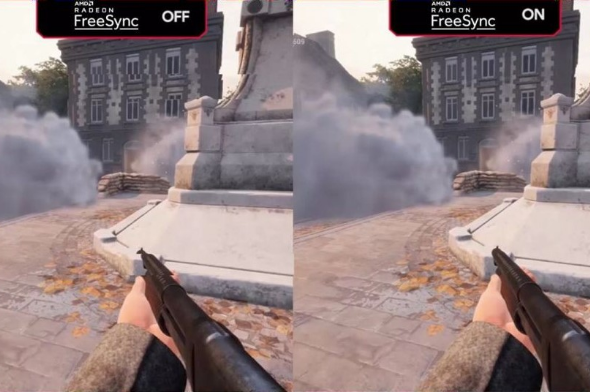Connection to DriversCloud Create a DriversCloud.com account Reset your DriversCloud.com password Account migration
Stricter FreeSync, more ambitious screens
AMD finally seems to be getting to grips with the problem of FreeSync monitors barely able to display 60 Hz in competitive games.
In many areas, AMD is competing with NVIDIA, but - often - with a slight delay. In some cases, this is for the better, as it corrects certain imperfections of the GeForce developer. In other cases, however, it's more like an "afterthought". In the case of FreeSync technology, it's a bit of both. Designed to stand up to NVIDIA's G-Sync, FreeSync is intended to ensure greater consistency between the scenes rendered by the graphics card and the results displayed by the screen. In particular, the aim is to ensure animation speed in line with the screen refresh rate, to avoid what is known as tearing- those particularly unsightly "torn" images.
FreeSync has the advantage of being less restrictive and more open than G-Sync. In fact, many monitor manufacturers have been quick to offer FreeSync models, especially as the technology works equally well on Radeon and GeForce cards, whereas NVIDIA, as is often the case, only thinks in terms of its own graphics cards. Released well after G-Sync, FreeSync managed to carve out a nice success for itself, but this was not without a quid pro quo, as AMD proved to be far more forthcoming than NVIDIA: poor-quality monitors could thus be certified FreeSync. As early as 2017, AMD began to rectify the situation by offering FreeSync 2, but it was in 2020 that things really got moving, with the adoption of three levels of certification: FreeSync, FreeSync Premium and FreeSync Premium Pro.
These three levels are still with us today, but AMD has decided to evolve them in order to push monitor manufacturers to upgrade the features of their FreeSync models. Thus, on monitors less than 3440 pixels wide, the FreeSync label implies a refresh rate of at least 144 Hz. At the second level, FreeSync Premium can be applied to screens less than 3440 pixels wide, with a refresh rate of at least 200 Hz. It can also be applied to screens 3440 pixels wide or more, if their refresh rate is at least 120 Hz. Last but not least, the FreeSync Premium Pro label retains the FreeSync Premium specifications, but adds the HDR requirement for better colors.
No revolution, then, but AMD finally seems to be taking the measure of the problem of gamers being duped into buying a FreeSync monitor, but with a refresh rate of only 60 or 75 Hz: not exactly the best!







